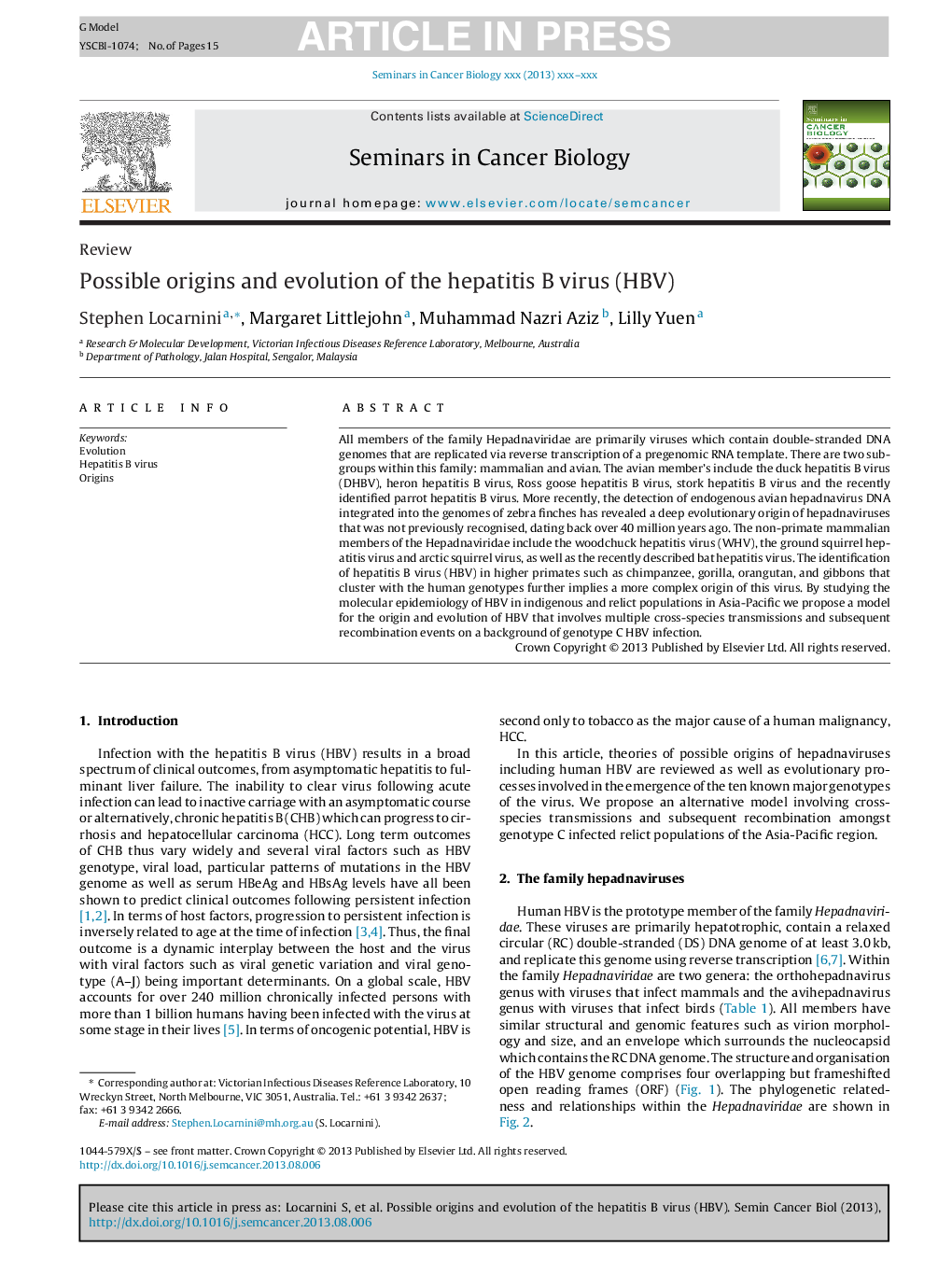| Article ID | Journal | Published Year | Pages | File Type |
|---|---|---|---|---|
| 10845641 | Seminars in Cancer Biology | 2013 | 15 Pages |
Abstract
All members of the family Hepadnaviridae are primarily viruses which contain double-stranded DNA genomes that are replicated via reverse transcription of a pregenomic RNA template. There are two subgroups within this family: mammalian and avian. The avian member's include the duck hepatitis B virus (DHBV), heron hepatitis B virus, Ross goose hepatitis B virus, stork hepatitis B virus and the recently identified parrot hepatitis B virus. More recently, the detection of endogenous avian hepadnavirus DNA integrated into the genomes of zebra finches has revealed a deep evolutionary origin of hepadnaviruses that was not previously recognised, dating back over 40 million years ago. The non-primate mammalian members of the Hepadnaviridae include the woodchuck hepatitis virus (WHV), the ground squirrel hepatitis virus and arctic squirrel virus, as well as the recently described bat hepatitis virus. The identification of hepatitis B virus (HBV) in higher primates such as chimpanzee, gorilla, orangutan, and gibbons that cluster with the human genotypes further implies a more complex origin of this virus. By studying the molecular epidemiology of HBV in indigenous and relict populations in Asia-Pacific we propose a model for the origin and evolution of HBV that involves multiple cross-species transmissions and subsequent recombination events on a background of genotype C HBV infection.
Keywords
Related Topics
Life Sciences
Biochemistry, Genetics and Molecular Biology
Biochemistry
Authors
Stephen Locarnini, Margaret Littlejohn, Muhammad Nazri Aziz, Lilly Yuen,
